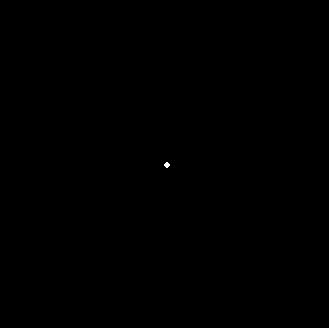The probably most important step is missing in your code:
- If new point is valid, new point is listed as spawnpoint and placed into cell in grid.
I suggest to add the point to the cellGrid if it is valid:
if isValid:
cellGrid[newPointIndex[0]][newPointIndex[1]] = newPoint
points.append(newPoint)
spawnpoints.append(newPoint)
spawned = True
break
Further, you have to verify if the cell with the index newPointIndex is not already occupied before a point can be add:
newPointIndex = [int(newPoint.x/cellSize), int(newPoint.y/cellSize)]
if cellGrid[newPointIndex[0]][newPointIndex[1]] != None:
continue
neighbours = FindNeighbours(cellNumberX,cellNumberY,newPointIndex,cellGrid)
Finally there is an issue in the function FindNeighbours. range(start, stop) creates a range for x in start <= x < stop.
So the stop has to be index[0]+3 rather than index[0]+2.
Further the ranges which control the 2 nested for loops, run both from x-2 to y+2 rather than from x-2 to x+2 respectively from y-2 to y+2:
for cellX in range(max(0,(index[0]-2)), min(cellNumberX,(index[1]+2))):
for cellY in range(max(0,(index[0]-2)), min(cellNumberY,(index[1]+2)))
The fixed function has to be:
def FindNeighbours(cellNumberX, cellNumberY, index, cellGrid):
neighbours = []
for cellX in range(max(0, index[0]-2), min(cellNumberX, index[0]+3)):
for cellY in range(max(0, index[1]-2), min(cellNumberY, index[1]+3)):
if cellGrid[cellX][cellY] != None:
neighbours.append(cellGrid[cellX][cellY])
return neighbours
See the result, for a size of 300 x 300 and a radius of 15:

An even better result can be achieve, if always the 1st point of spawnpoints is used to rather than a random point:
# spawnIndex = random.randint(0,len(spawnpoints)-1)
spawnIndex = 0 # 0 rather than random
spawnpoint = spawnpoints[spawnIndex]

